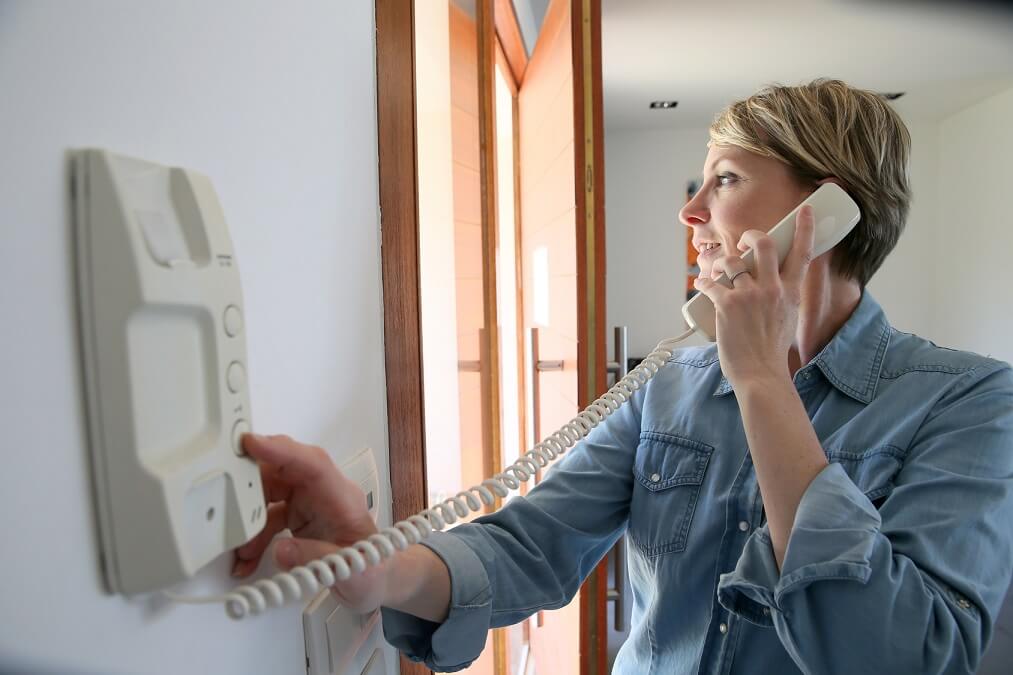Intercom systems save you from having to go to your door unnecessarily and add an extra level of security: You can ask who is at your door. The right intercom system allows you to conveniently see who is at your door from wherever you are in your house, even from the garden. Intercom systems come in versions for single-family homes and apartment buildings, as pure intercom systems and with video. They come in 2, 3 and 4-wire systems and wireless systems. Which intercom system is the right one for you?
How to choose the right intercom system for your home
The answers to these three questions will help you find the right intercom system:
- Do you want to use it for a single-family home or an apartment?
- Do you want to see who is on your doorstep, or are you happy to just talk to them?
- Is there a pre-installation or is there a 2 or 4-wire cable?
Obviously you will know if you live in a single-family house or apartment building. Intercom systems vary in terms of whether they have just one or several bell buttons that are connected to different, independent internal stations.
Door intercoms with video come highly recommended if the door is equipped with an electric door opener that allows it to be opened from afar, and if children or senior citizens live in the household. In these circumstances, the video intercom offers an additional level of security.
Intercom with wire technology or wireless technology?
When it comes to the number of wires, the first thing to bear in mind is that: The more wires there are in your intercom system, the more features it can deliver. However, it then becomes a lot more complicated to install. This is only a rule of thumb.
In practice, for example, a crucial factor is whether a bell system is already in place, the wiring of which you can continue to use.
A 2-wire intercom system is especially advantageous if you are using a simple doorbell or will replace an existing system that is only connected via a double-circuit line. This will then save you from having to lay new cables, which would cost you in terms of material and labour. If you still don’t want to do without the benefits of a 4-wire system, you can use additional wireless channels with some 2-wire systems.
Wireless or wired — which is better?
Pure wireless intercom systems are particularly suitable for existing buildings without appropriate wiring and where it is not possible to lay new cables. In new buildings, it is advisable to lay a four-core cable to keep all options open. It usually takes less time to install than to upgrade the system.
When compared to wireless systems, wired systems offer greater noise immunity. They can also entirely or at least partially handle the power supply of the connected stations. For wireless systems, the outdoor station and every indoor station needs its own power supply. With two-wire systems, only the outdoor stations can usually be supplied with power.
The indoor stations require their own power supply. 3-wire and 4-wire intercom systems with video also have the advantage that the video quality is higher than with 2-wire systems.
Image source: Fotolia / 82797560 / goodluz













